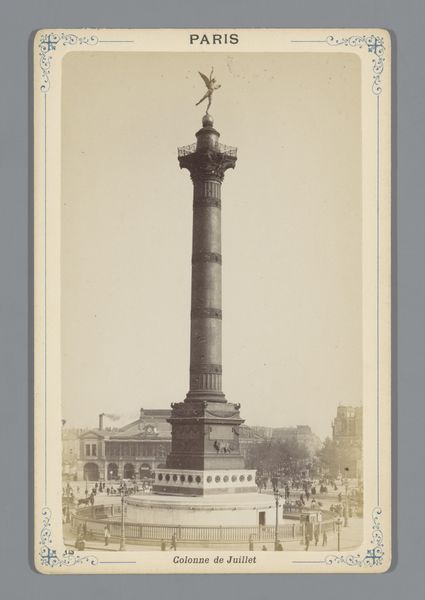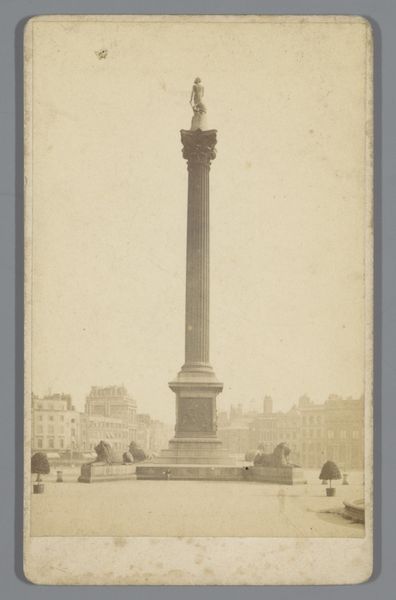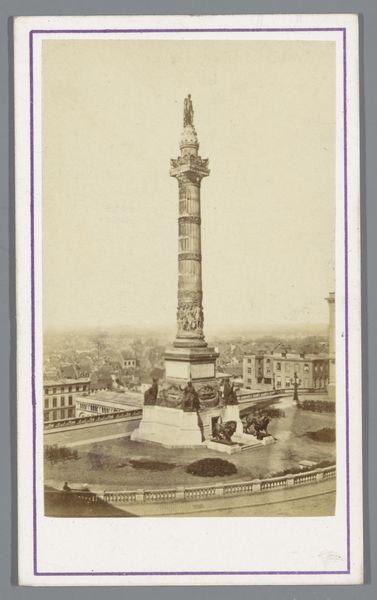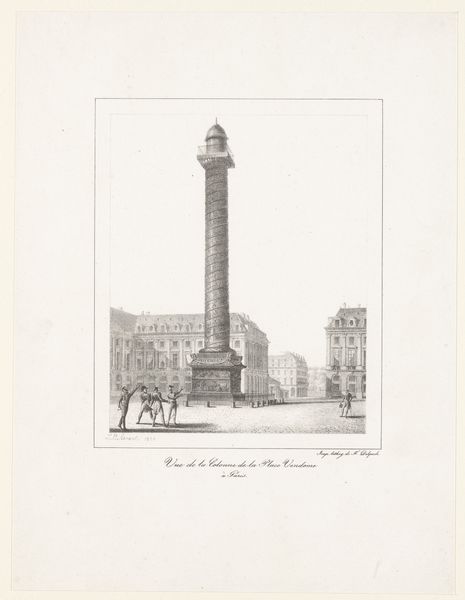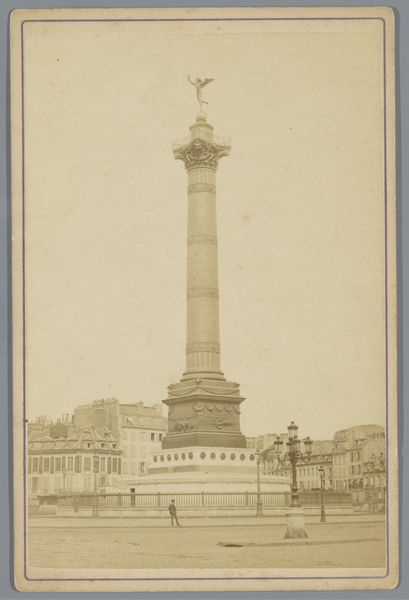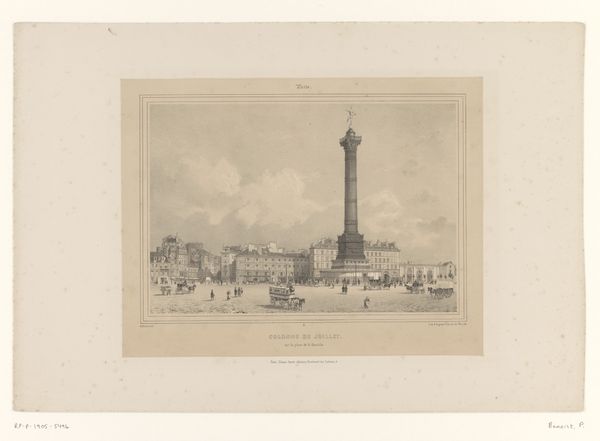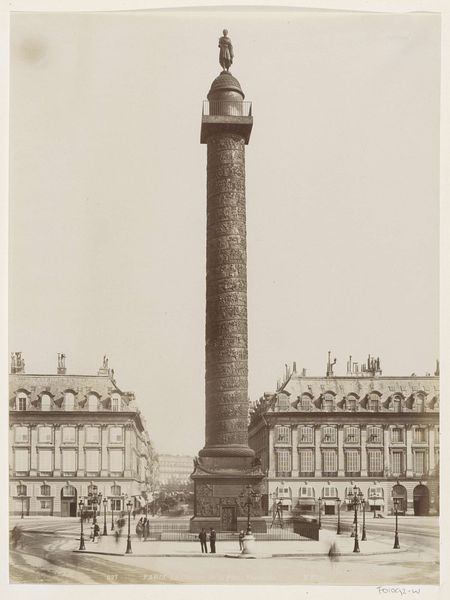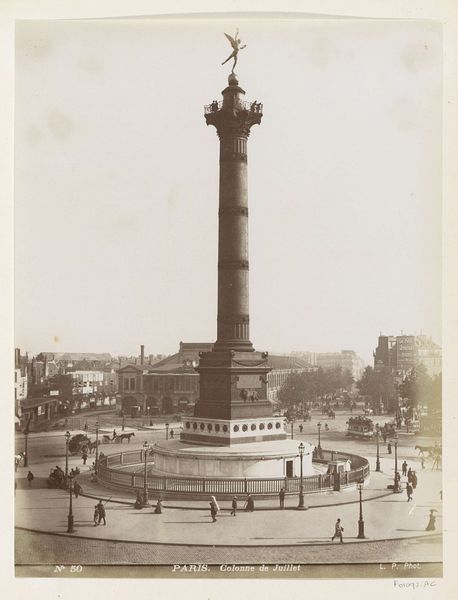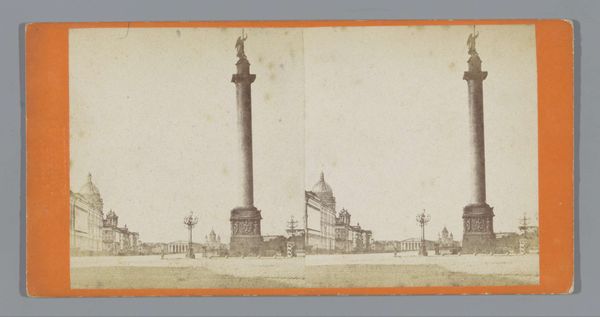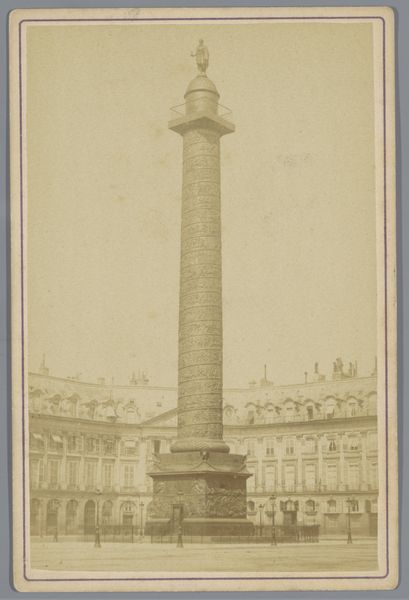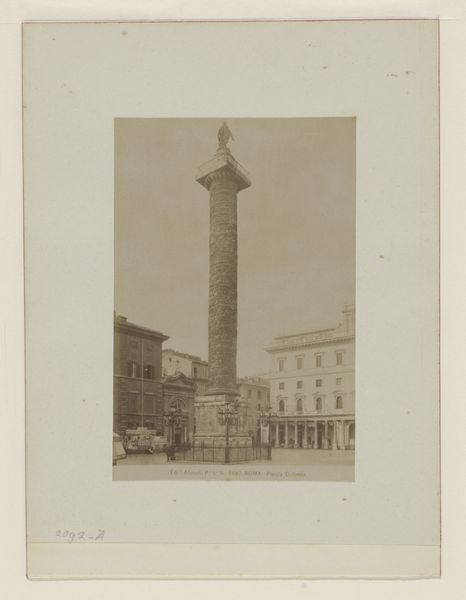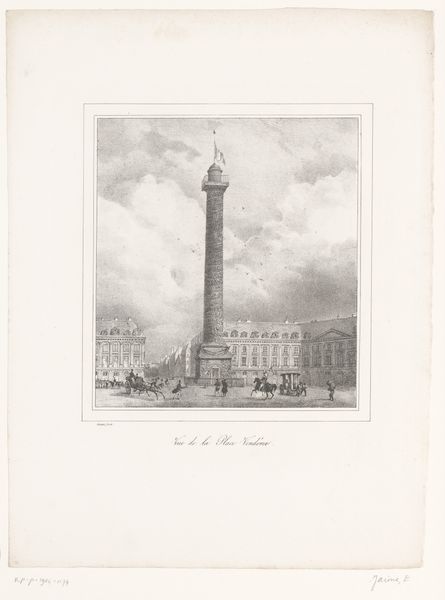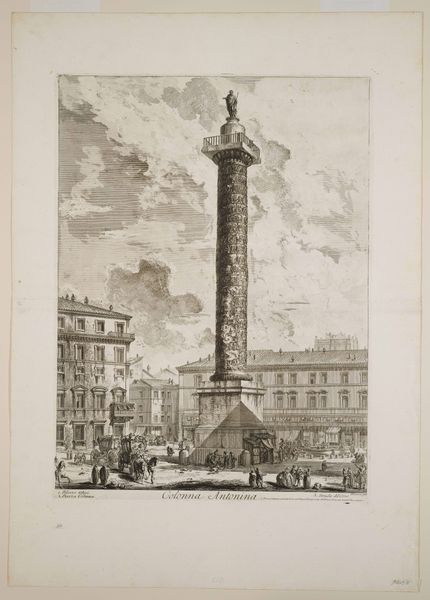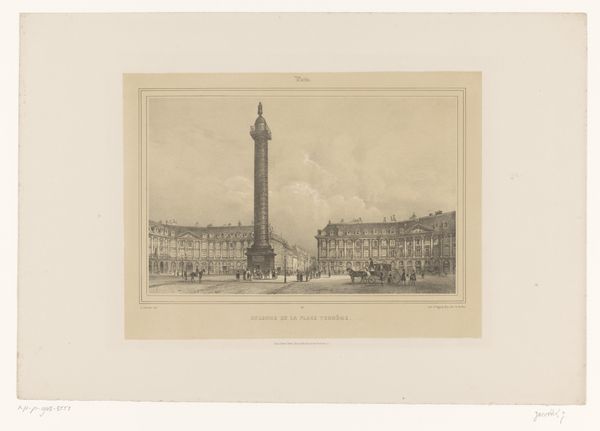
print, photography
#
portrait
# print
#
photography
#
cityscape
Dimensions: height 164 mm, width 107 mm
Copyright: Rijks Museum: Open Domain
Curator: It is titled "View of the Colonne Vendôme (Austerlitz Column) in Paris", created between 1870 and 1900 by Étienne Neurdein, captured through photography. Editor: What strikes me is how rigidly symmetrical it is, almost imposing, yet rendered in soft sepia tones that mellow the grandeur somewhat. Curator: That visual push-pull is quite apt given the material reality of its creation. Neurdein, as a photographer of architecture, operated within a very specific and expanding visual economy. Consider the material conditions of 19th-century photography – the labor, the specialized knowledge required for processing, and then its distribution through a burgeoning print market. Editor: Indeed. Structurally, it is compelling how the column’s verticality is emphasized against the horizontality of the Parisian architecture around it, though the blurring caused by long exposure times gives it a ghostly impermanence. Semiotically, that very sharp contrast becomes very meaningful. Curator: It makes us think about how images of Paris became highly commodified. These photographs weren’t just documents; they were mass-produced items consumed as souvenirs by tourists and as representations for a global audience eager to experience the "idea" of Paris without physically being there. Neurdein and his contemporaries participated in shaping that perception, in many ways influencing modern cityscapes and our desire to reproduce them for profit. Editor: And the monumentality, despite the softened sepia palette, is clear. We see the column dominating the Parisian architecture, telling the story of dominance through sharp contrast between verticality and horizontality that demands closer reading. Curator: Precisely. Beyond that first impression of grandeur, it becomes an artifact embedded within intricate processes of creation, replication, and distribution, mirroring industrial-age manufacturing with an inherent aesthetic intention. Editor: Thank you; the complexities within such a straightforward visual work provide such a rich viewing experience when contextualized and investigated with keen sight and sharp, informed questions.
Comments
No comments
Be the first to comment and join the conversation on the ultimate creative platform.
